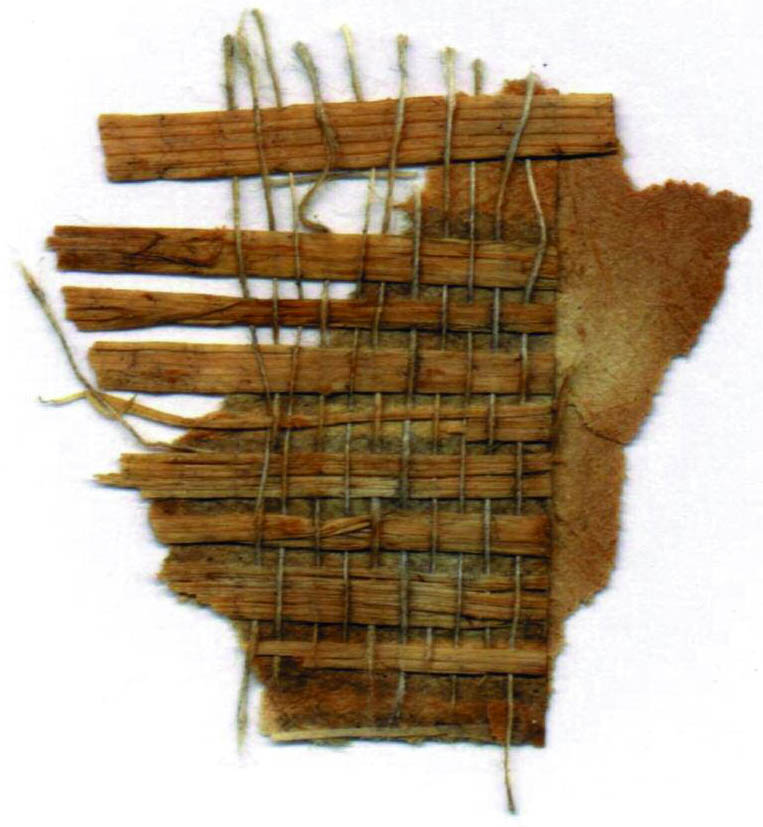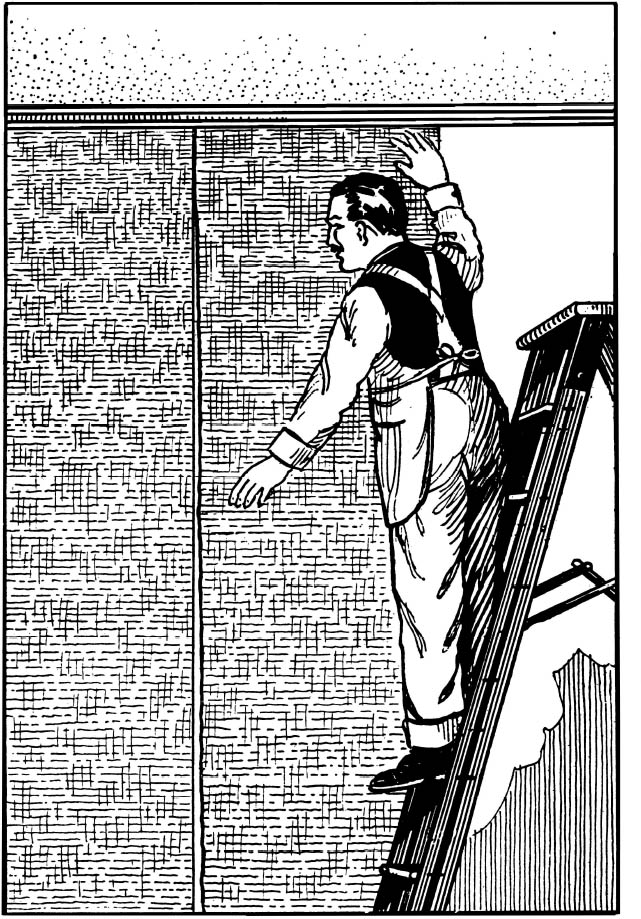INVESTIGATION, ANALYSIS, AND AUTHENTICATION OF HISTORIC WALLPAPER FRAGMENTSFRANK S. WELSH
DETERMINING TYPES OF WALL COVERINGS AND METHODS OF MANUFACTURE If the investigation is successful, yielding large pieces with complete patterns or even tiny fragments with only the suggestion of a pattern, then the fourth aspect of the analysis begins. This is the determination of the types of wall covering and methods of manufacture and pertains not only to the way the paper or covering is made but also to the manner in which the coatings for the patterns are applied. Wall-papers in the 18th century and the early part of the 19th century were printed on handmade paper. The individual sheets of paper varied in size from 56 cm to 81 cm (22–32 in.) square and were usually pasted together to make larger pieces or, in current terminology, rolls. Some papers were made with water-marks, which help with identification, and some of those coming from England between 1714 and 1830 were imprinted with a tax stamp on the reverse side. By 1820, machines were manufacturing “endless” rolls of wallpapers in France. These machines were in use by 1830 in England and by 1835 in America (Frangiamore 1977). In addition, some types of wall coverings are made from distinctive materials. Such papers include ingrains, integrally colored papers, and Lincrusta Walton, a figured, textured, linseed oil–based covering, both popular in the last quarter of the 19th century. Grass cloth, a woven, natural-fiber wallpaper available by the very late 1800s, was used through the early to mid-20th century (Winkler and Moss 1986). A fragment of grass cloth paper was found after a careful search between two abutting doorway architraves of a second-floor bedroom at Cairnwood (fig. 12), the Bryn Athyn, Pennsylvania, mansion designed by Carrere and Hastings for John Pitcairn in 1895. The obscure location between the door moldings offered protection from painters' scraping, a find that reinforces the importance of a careful search for evidence. Fabric wall coverings made of canvas were very popular from the late 1890s through the late 1930s (fig. 13) and were typically primed and finished with two coats of oil paint (Vanderwalker 1941). These painted canvas wall and ceiling coverings appeared in
The processes used to apply patterns to the papers have an interesting technological history and are helpful in dating wallpapers. Some 18th-and early-19th-century European and American papers were hand-painted or stenciled, but the majority were block-printed. Block-printing and stenciling might even be combined on one paper, and high-quality papers continued to be block-printed
|



